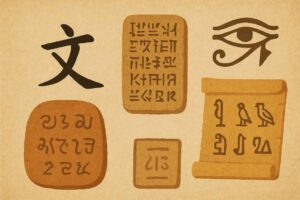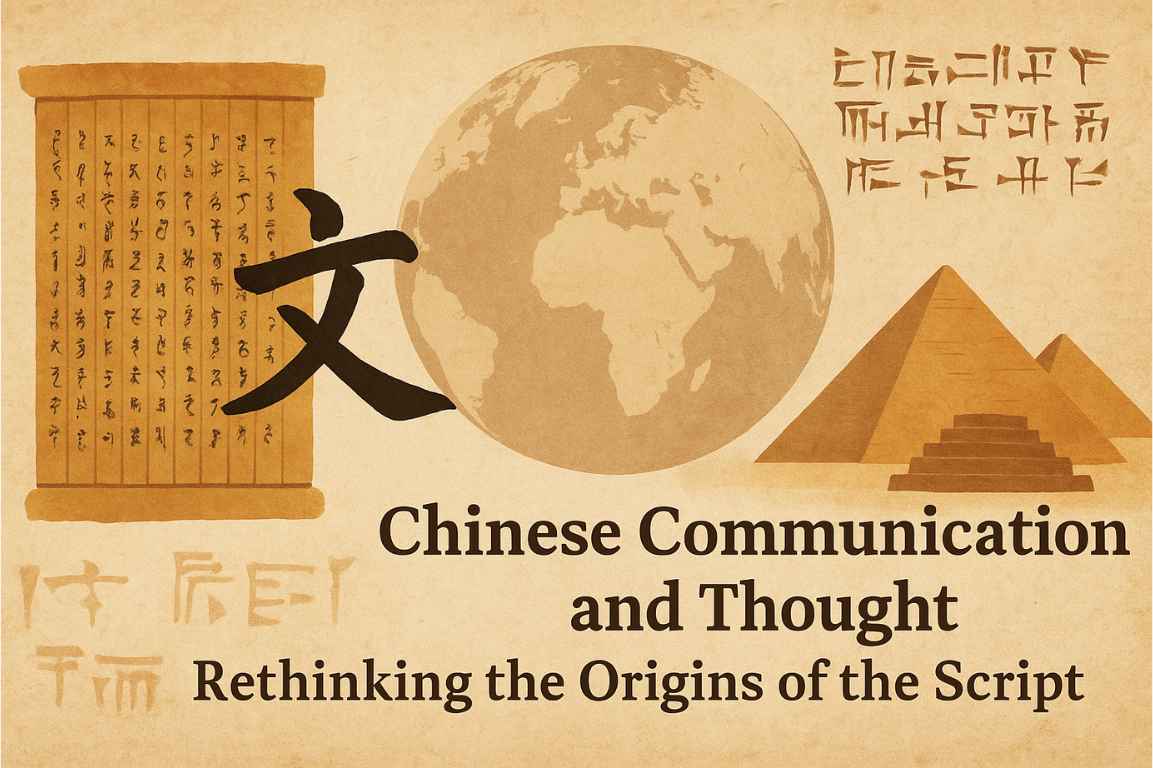This article has been written by Dylan Joseph, a student at The Oriental Dialogue learning Mandarin Chinese. Dylan is currently pursuing his undergraduate studies in History and Economics at St. Stephen’s College, Delhi. With a passion for history and a research focus on the relations of religion and state in ancient China, Dylan brings both curiosity and academic rigor to his work.
When we think of Chinese writing, we often imagine a system that developed independently, untouched by the outside world. But what if this wasn’t the case? What if the Chinese script, one of the oldest and most complex writing systems in the world, was influenced by – or even shared origins with – the scripts of Mesopotamia and Egypt?
Early Civilizations and the Question of Influence
China developed alongside Mesopotamia, Egypt, and the Indus Valley. While many scholars argue that Chinese civilization grew independently, there is growing evidence of cultural exchange across regions. Pottery, bronze technology, and even early agricultural practices show signs of cross-cultural interaction.
From Knotted Cords to Bamboo Sticks
Chinese communication systems began with knotted cords (結繩, jié shéng), used as mnemonic devices, much like the quipu in ancient Peru. Over time, these cords gave way to bamboo slips, creating a more permanent and organized way of recording information. This marked a major step in the history of Chinese writing.
The Mythical Origins of Chinese Writing
Legend credits Ts’ang Hieh with inventing Chinese characters after seeing divine markings on a tortoise’s shell. These pictographs evolved over centuries, shaping the script we recognize today. While mythical, this story shows how writing was deeply tied to ideas of divinity, order, and culture in early China.
Debating Connections with Other Civilizations
Some historians suggest that early Chinese pictographs share remarkable similarities with Mesopotamian cuneiform and Egyptian hieroglyphs. Artifacts such as Chinese bottles found in Egyptian tombs support the idea of cultural contact. While many scholars reject the theory that Chinese writing was imported, the possibility of shared influence cannot be ignored.
Writing as a Cultural Force
Chinese writing was never just about communication. It was tied to religion, ancestor worship, governance, and the concept of the “Middle Kingdom” (中國, Zhōngguó). The script shaped how ancient Chinese people viewed themselves and the world, reinforcing their cultural identity.
Rethinking Ancient China’s Place in the World
Dylan’s essay challenges the common belief that China was an inward-looking civilization. Instead, the evidence suggests that ancient China was part of a wider web of exchange, influenced by and influencing its neighbors. Writing, in this sense, becomes more than a script—it becomes proof of interconnected histories.
At The Oriental Dialogue, we are proud to see our students not just learning a language, but also using it as a lens to engage with broader questions of history, culture, and global exchange.
We invite you to read Dylan’s full piece below, and join us in rethinking the origins of the Chinese script—not as an isolated invention, but as part of the great story of human interconnectedness.




